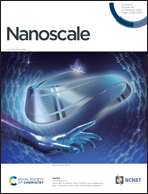CoP and Ni2P implanted in a hollow porous N-doped carbon polyhedron for pH universal hydrogen evolution reaction and alkaline overall water splitting†
Abstract
Developing low-cost and highly active bifunctional electrocatalysts for water splitting is very important but still remains a challenge. Herein, a novel bifunctional electrocatalyst composed of CoP and Ni2P nanoparticles implanted in a hollow porous N-doped carbon polyhedron (CoP/Ni2P@HPNCP) is synthesized by carbonization of Co/Ni-layered double hydroxide@zeolitic imidazolate framework-67 (Co/Ni-LDH@ZIF-67) followed by an oxidation and phosphorization strategy. The introduction of LDH can not only promote the formation of a hollow porous structure to supply more active sites, but also generate the CoP/Ni2P nanoheterostructure to afford extra active sites and modulate the electronic structure of the catalyst. As a result, CoP/Ni2P@HPNCP exhibits excellent pH universal hydrogen evolution reaction activity and alkaline oxygen evolution reaction activity. Furthermore, the electrolytic cell assembled from bifunctional CoP/Ni2P@HPNCP requires a cell voltage of 1.59 V in 1.0 M KOH at 10 mA cm−2, revealing its potential as a high performance bifunctional electrocatalyst.



 Please wait while we load your content...
Please wait while we load your content...